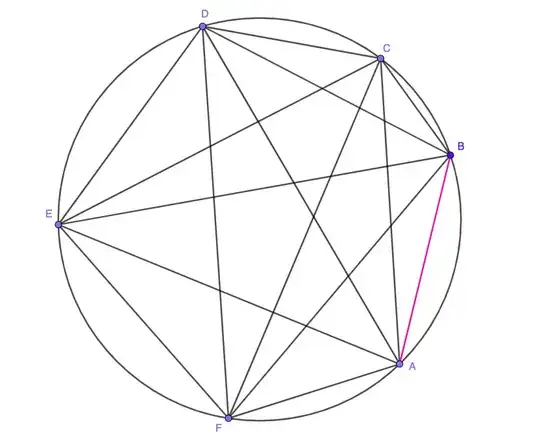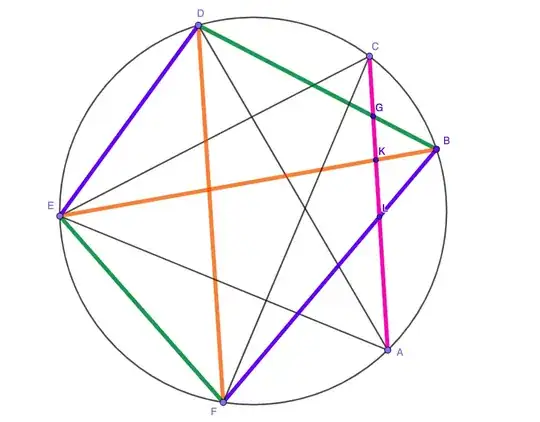Indeed, there is only one interior triangle. Here is the full mesh:

Look at the point $A$. Can we create an interior triangle if we connect $A$ with it's nearest neighbor (WLOG, we can assume that it's point B, see picture). The answer is - no! Because there is no other chord intersecting chord $AB$ you cannot create an interior point of your triangle. So you can eliminate segments $AB$, $BC$, $CD$, $DE$, $EF$, $FA$.

If we cannot create an interior triangle with chord $AB$, maybe we can do that if we connect $A$ with $C$ or $E$. These two cases are equivalent - basically, you take point $A$, skip the first neighbor clockwise or counterclockwise and select the next neighbor. WLOG we can assume that it's point $C$. Notice that point $B$ and points $D,E,F$ are on different sides of chord $AC$. So it's guaranted that chord $AC$ and chords $BD$, $BE$, $BF$ intersect at points $G,K,L$. These three points are candidates for trinagle interior points.
However, If you pick $AC$ and $BD$, the remaining points $E,F$ are neighbors and the third chord $EF$ does not intersect with any of them. If you pick $AC$ and $BF$, points $D,E$ are neighbors and the third chord $DE$ does not intersect either. In the last case you have chords $AC$ and $BE$. The third chord is $DF$. But points $D,F$ are on the same side of chord $AC$ and therefore chords $AC$ and $DF$ do not intersect and do not form the interior point of the triangle.

The last option is to connect $A$ with the opposite point $D$. Do the same for points $B$ and $E$. Chords $AD$ and $BE$ do intersect because points $B,E$ are on different sides if chord $AD$. That creates one interior point of the triangle. In the same way you can show that it's guaranteed that $BE$ and $CF$ intersect (second interior point of the triangle). The third interior point is created by intersecting chords $AD$ and $CF$.
In this last case you should also show that you cannot create an interior triangle by selecting chord $AD$ and any other chord with end point $B$ excpet $BE$. This is obvious: $BA,BC,BD$ are ruled out because these chords do not create interior points with chord $AD$. If you choose $BF$, the third chord would be $CE$ and that chord does not intersect with $BF$ and you don't get an interior point.
So you have only one interior triangle formed. That triangle is always formed by chords $AD,BE,CF$. If these three segments concur, the interior triangle disappears.


